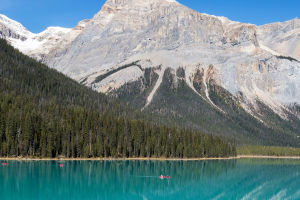The moose is a genus of animals in the deer family.
It has a body length of 200-260 cm, a shoulder height of 160-240 cm, and a weight of 400-700 kg. The shoulders are particularly high, resembling the hump on the back of a camel, hence the name. The coat color of the entire body is tan, with the summer coat much darker than the winter coat.
The moose's eyes are relatively small, brown, and slightly protruding, about 4 cm in diameter, and rimmed with long eyelashes. The tear marks are not obvious, and the pupils are horizontally oval in shape.
Its head is large and elongated, almost as long as its neck. The forehead sinks forward and has a slight depression toward the high nasal bridge. The head is quite wide at the forehead.
The anterior part of the face, above the large nasal cavity, appears swollen and slopes steeply down to the upper lip. The end of the head is narrow and very elongated at the nose with a long so-called "muffle" with a strongly overhanging cartilaginous upper lip. The labial snout is covered with many tentacles, which help moose quickly select tree branches in winter and leaves in summer.
Moose have a well-developed sense of taste and are very selective in their choice of food. They have long lips designed for brushing off leaves. The large, powerful upper lip has a unique appearance.
The moose is a typical sub-boreal coniferous forest herbivore, living alone or in small groups, mostly active in the morning and evening. It is found in the northern part of Eurasia and northern North America, and the coat color varies among subspecies.
The moose is a forest animal and is active during the day. However, because moose do not have many sweat glands on their bodies except for their mouths, they experience heat stress when the temperature is too high.
To avoid this, they are more active in the cooler mornings and evenings during the hot season than during the hottest part of the day. Heat stress causes an increased heart rate, leading to unnecessary energy expenditure.
Although moose are distributed in high numbers in North America, they are rare in China and have been listed in Class One of China's National List of Key Wildlife Protection (as of February 5, 2021).
In daily life, people often confuse moose with elk. Here are some differences between the two:
1. Different shape features
Elk have longer horns and shed them once a year in December. Female elks have no horns and are smaller in size. Males have multi-forked horns like deer, long necks like camels, and black hair at the end of the tail. Elks' horns have a special shape and no eyebrow fork. The head is large, the muzzle is narrow and long, the exposed part of the snout end is wide, the eyes are small, and the suborbital glands are prominent.
2. Different habitats
Elks are suitable for activities in swamps. Their long and hairy tail is good for repelling flying insects. Judging from the elk's habit of soaking in water and mud bath, they used to live in warm and moist swamps. Elks prefer plains, marshes, and water.


